We are working on application-centric customizations for the power industry: Vedanta
- June 4, 2021
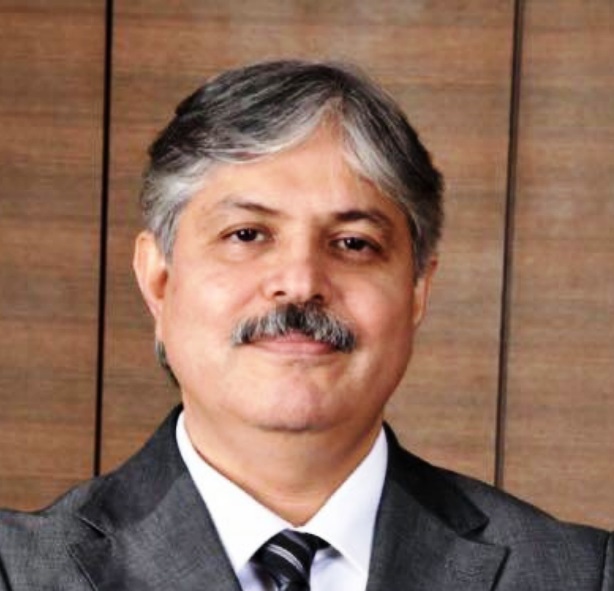 Part of Vedanta Ltd, Vedanta Aluminium is the world’s largest producer of aluminium wire rods, outside China, and caters almost exclusively to the power industry. In this exclusive interview, we have Ajay Kapur, CEO – Aluminium & Power and MD – Commercial, Vedanta Ltd, discussing the criticality of aluminium in the power T&D industry. Kapur also discusses how Vedanta, through its continual R&D, plans to enrich its contribution to the power conductor industry by producing energy-efficient and application-centric customized aluminium alloys. The vision of Vedanta Aluminium is to leverage its sustainable and efficient manufacturing processeses, coupled with its technology leadership, to produce top-quality value-added aluminium products, notes Kapur. An interview by Venugopal Pillai.
Part of Vedanta Ltd, Vedanta Aluminium is the world’s largest producer of aluminium wire rods, outside China, and caters almost exclusively to the power industry. In this exclusive interview, we have Ajay Kapur, CEO – Aluminium & Power and MD – Commercial, Vedanta Ltd, discussing the criticality of aluminium in the power T&D industry. Kapur also discusses how Vedanta, through its continual R&D, plans to enrich its contribution to the power conductor industry by producing energy-efficient and application-centric customized aluminium alloys. The vision of Vedanta Aluminium is to leverage its sustainable and efficient manufacturing processeses, coupled with its technology leadership, to produce top-quality value-added aluminium products, notes Kapur. An interview by Venugopal Pillai.
To start with, please give us an idea of the primary aluminium industry in India. What is the demand, supply and import dependence?
India has the second largest aluminium production capacity in the world at 4.1 million tonnes per annum, backed by the world’s fifth largest reserves of bauxite and coal. At over 1.96 million tpa, Vedanta’s aluminium business produces more than half of the country’s aluminium, commanding nearly 48 per cent of the domestic market share and 3 per cent of the global market share.
“Despite sufficient aluminium capacity, only 40 per cent of the total demand in the country is met through domestic production whereas 60 per cent is imported, leading to substantial forex outgo.”
Today, the world per capita consumption of aluminium is 11.6 kg, whereas in sharp contrast India is at a mere 2.7 kg. While the country’s primary production grew at about 10.5 per cent CAGR between FY16 and FY20, aluminium consumption grew at a much lower CAGR of 3.3 per cent in the same period.
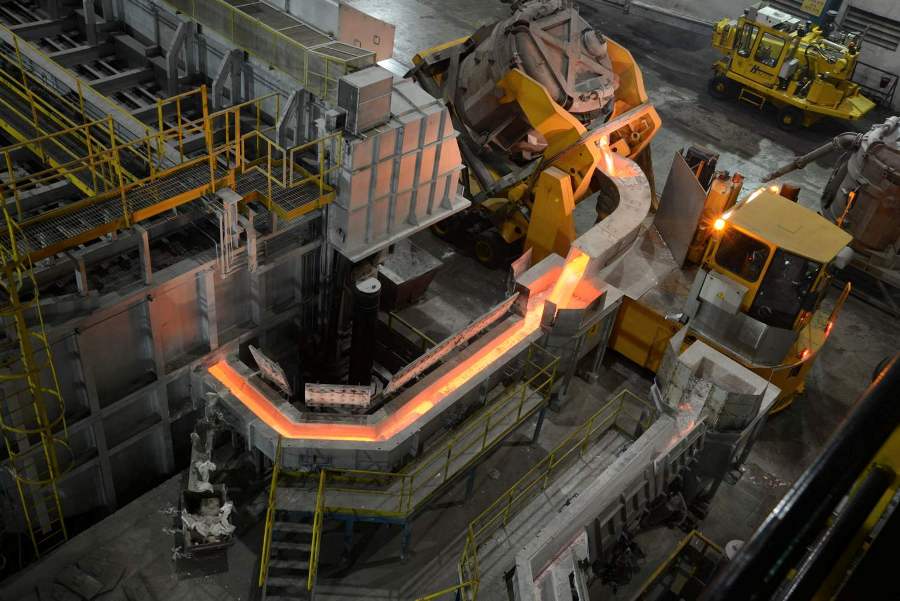 Despite sufficient capacity, only 40 per cent of the total demand in the country is met through domestic production whereas 60 per cent is imported. Aluminium imports have witnessed a huge surge in recent years, primarily from China, ASEAN countries and the Middle East.
Despite sufficient capacity, only 40 per cent of the total demand in the country is met through domestic production whereas 60 per cent is imported. Aluminium imports have witnessed a huge surge in recent years, primarily from China, ASEAN countries and the Middle East.
This results in forex outgo of $4.4 billion (Rs 31,000 crore), almost 1 per cent of the country’s import bill – an absolute travesty! This aberration is largely due to the duty differential: scrap import is taxed at 2.5 per cent, whereas primary aluminium import is at 7.5 per cent.
Therefore, though domestic primary producers are well equipped to cater to the domestic demand, hundreds of secondary and tertiary producers prefer cheaper raw material. This conflict results in China directly and indirectly flooding the Indian market with cheap, low-quality and sometimes, even environmentally-hazardous scrap, which also finds its way into the power industry.
As a group, what is the total aluminium production capacity of Vedanta?
Vedanta Aluminium has installed smelting capacity of around 2.2 million tpa, which include state-of-the-art aluminium smelters in Odisha and Chhattisgarh, and a world-class alumina refinery in Odisha. Vedanta Aluminium produces a diverse range of high-quality value-added products in the form of ingots, billets, wire rods, primary foundry alloys (PFA), slabs, flip coils, rolled products, etc. that find applications in a whole host of industries – from electricity to automobiles, to construction.
“We have ambitious plans to ramp up our aluminium capacity to 3 million tpa”
Are there any capacity expansion plans?
Yes, we are in expansion mode with ambitious plans to ramp up the aluminium production capacity to 3 million tpa, with focus on quality excellence, value addition and building downstream capabilities, for expanding our share of wallet in the domestic market. This will be backed by accelerated technology deployment, adoption of cutting-edge solutions, investments in R&D and innovation, with a keen eye on emerging markets and applications of aluminium in those markets.
Aluminium is an important non-ferrous metal used in the electrical industry. What are the inherent properties of aluminium that make it so indispensable?
Aluminium is already the second most used metal in the world today and has the potential to become the most important commercial metal. Aluminium’s inherent properties, such as its high strength-to-weight ratio, exceptional design flexibility, corrosion resistance, phenomenal electrical conductivity, non-magnetic properties and 100 per cent recyclability, make the metal and its alloys indispensable for the power industry.Besides overhead power transmission lines, aluminium finds myriad uses in electrical applications like wiring power grids, busbars, cables, motors, foil windings, heating elements, heatsinks, etc.
What are the advantages of aluminium over copper, especially when it comes to overhead conductors?
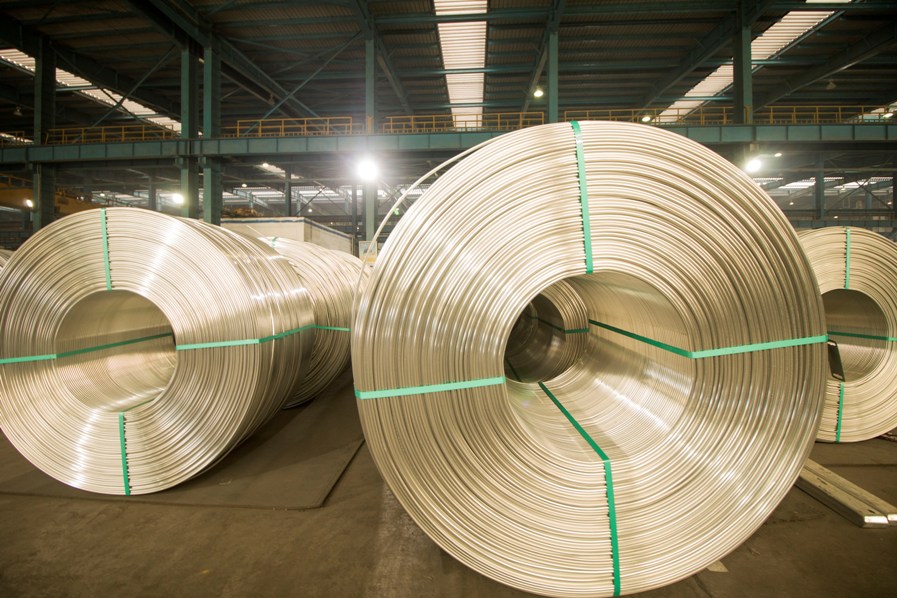 Among non-precious metals, only copper has higher a conductivity than aluminium. So while standard aluminium wires need nearly 1.5 times larger cross-section to pass the same amount of current, they are nearly two times lighter.
Among non-precious metals, only copper has higher a conductivity than aluminium. So while standard aluminium wires need nearly 1.5 times larger cross-section to pass the same amount of current, they are nearly two times lighter.
High strength-to-weight ratio and non-corrosivity in the face of weather elements, is why only aluminium wire rods are used for transmission lines, with service life as long as 40 years.
The light weight of aluminium wire rods lends itself very well to non-sagging of transmission lines, which is of vital importance while ensuring power distribution over long distances. Aluminium wires reduce the load onto grid pylons and increases the distance of spans between them, thus reducing expenses and shortening construction time. This is further bolstered by the fact that aluminium has good ductility and formability, and easily sustains significant static loads. Added to that, aluminium’s ability to oxidize with heat gives aluminium wires excellent insulation against external effects.
We understand that performance of power conductors (overhead) has been greatly enhanced over the years, thanks to aluminium alloys. Please discuss.
All Aluminium Conductor (AAC), All Aluminium Alloy Conductor (AAAC) and Aluminium Conductor Steel Reinforced (ACSR) form part of the family of overhead conductors, transmission conductors and power distribution conductors, used as power transmission and distribution lines. All aluminium conductors are made up of one or more strands of aluminium wire depending on the specific application.
- AAC are a refined aluminium stranded conductor with a minimum metal purity of 99.7 per cent, principally used in urban areas, railway and metro sectors, where spacing is short and the supports are close. It can also be used in coastal regions owing to its high degree of corrosion resistance.
- AAAC are used as a bare conductor cable on aerial circuits that require a larger mechanical resistance than the AAC and a better corrosion resistance than the ACSR. The sag characteristics and the strength-to-weight ratio of the AAAC conductor cable is better than both AAC and ACSR.
- ACSR are available in a range of 6-40 per cent steel content for additional strength. The higher strength ACSR conductors are commonly used for river crossings, overhead earth wires, and installations involving extra-long spans. The ACSR conductor can, against any given resistance, be manufactured to different tensile strengths, so a high tensile strength combined with its lightweight properties means it can cover longer distances with fewer supports. Due to the greater diameter of the ACSR conductor, a much higher corona limit can be obtained which is advantageous on high and extra high voltage overhead lines.
How has Vedanta supported the power conductor industry through innovative aluminium alloys? Please also discuss the R&D set up of Vedanta, especially for aluminium alloys.
Vedanta produces high strength low sag special grade wire rods from primary aluminium, with purity levels as high as 99.99 per cent and an appreciable lifecycle. This enables us to deliver high quality products with superior conductivity over conventional electric grade conductors, for various applications in the power industry.
Our R&D facility continually explores newer applications of aluminium through new alloys and innovations in value-added products. With our engineering prowess, deep R&D capabilities, a vibrant Innovation Cell, Centre of Quality Excellence and Customer Technical Service (CTS) function, we are well resourced to meet the current and evolving needs of the domestic and global customers.
“We are working with global technology experts in aluminium and aluminium alloys for stepping up our competitive edge across the entire bouquet of product offerings.”
Does Vedanta have any technical collaboration for specialty alloys?
We are working with global technology experts in aluminium and aluminium alloys for stepping up our competitive edge across the entire bouquet of product offerings. We are working with new-age startups and research institutes to explore emerging applications of aluminium, to cater to the evolving needs of the industry.
Apart from India, to which other countries does Vedanta supply special aluminium alloys for power transmission conductors?
India is currently the largest consumer of aluminium based wires and cables, excluding China, with an annual consumption of 1.2 million tonnes of aluminium wire rods. India’s per capita consumption of aluminium in the electrical sector is at 0.9 kg, while the world average is about 1.3 kg.
Vedanta Aluminium is the world’s largest producer of aluminium wire rods, ex-China, catering almost exclusively to the power industry. We are the preferred supplier of wire rods to developed markets like Americas and emerging ones like Saudi Arabia, Nepal, Sri Lanka, Oman, Vietnam, and other Asian countries.
“We are working on application-centric customizations — power transmission in coastal belts, for instance.”
Is there any research underway to produce even more efficient aluminium alloys?
We are working on application-centric customizations of our wire rods portfolio for the power industry, like power transmission in coastal belts, which have specific requirements due to their climatic conditions.
Apart from conventional EC wire rods, we have added other grades like alloy rods with M, O, T4 tempers and Al59 to our portfolio. In view of development of new power transmission and distribution grids by global power incumbents, AL-59 alloy conductors would have a special significance while designing transmission line networks, as the properties of these conductors enable superior power evacuation while optimizing the cost of the entire grid.
Further, we are exploring special grade conductors like HTLS (High Temperature Low Sag Conductors) or STAL (Heat Resistant Aluminium Zirconium Alloy). Zirconium-doped aluminium alloys maintain their electrical and mechanical properties at elevated temperatures as well, thus making these conductors cost and energy effective with enhanced capacity.
Speaking of production of aluminium, we understand that it is a power-intensive activity. Over the years, has production of aluminium itself become energy efficient?
Primary aluminium production is a power-intensive process, but aluminium recycling barely uses 5-10 per cent of the energy required to produce primary aluminium. Further, aluminium is 100 per cent recyclable. Almost 75 per cent of aluminium ever produced is still in use. This has massive implications in terms of reducing carbon footprint, limiting future emissions, and fostering circular economy. No wonder aluminium is called the green “Metal of the Future’.
Would it be technically feasible to use renewable energy in the production of aluminum?
Given India’s immense coal reserves and lack of adequate and reliable renewable energy generation to sustain energy requirements of power-intensive industries, we are yet to produce aluminium entirely with green energy. However, that hasn’t stopped us from making a step-change in our energy performance through sustained improvement in performance parameters, asset reliability, etc.
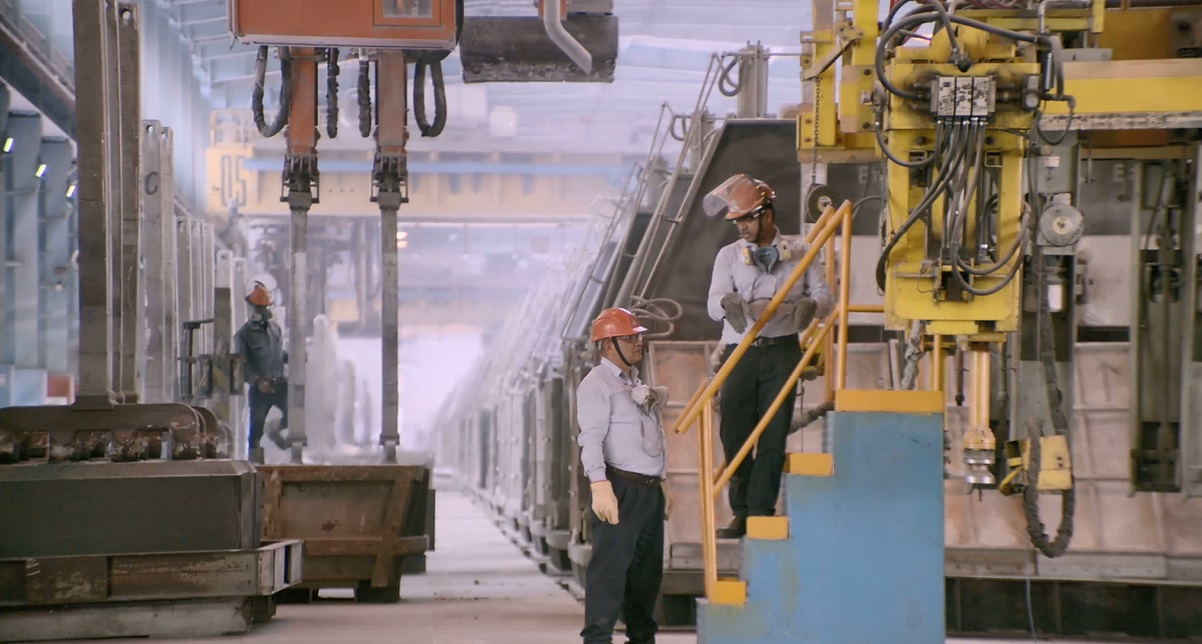 For example, Vedanta Aluminium is the first in Indian and third in the world to deploy Digital Smelter Solution, at its aluminium smelter in Jharsuguda, Odisha. It uses “Digital Twin” technology for human-less monitoring and control of pot-line operations, enhances energy efficiency, reduces raw material consumption and arrests wastage of material through remote advisory system.
For example, Vedanta Aluminium is the first in Indian and third in the world to deploy Digital Smelter Solution, at its aluminium smelter in Jharsuguda, Odisha. It uses “Digital Twin” technology for human-less monitoring and control of pot-line operations, enhances energy efficiency, reduces raw material consumption and arrests wastage of material through remote advisory system.
It is also the first aluminium smelter in Asia to receive ISO50001 certificate for Energy Management System since 2013. In fact, our aluminium smelters and alumina refinery are among India’s most energy efficient manufacturing units, decorated with numerous coveted national accolades.
We have deployed advanced data analytics technologies in our power plants by incorporating digital twins for both predictive and prescriptive analytics to enhance efficiency, avoid downtimes, optimize operational processes, reduce inventory carrying cost, improve sustainability of operations and reduce wastage and safety risks.
Initiatives to enhance operational excellence have resulted in overall specific energy consumption by 22 per cent over the last five years at our alumina refinery in Lanjigarh, Odisha. In fact, we have reduced indirect energy consumption by 8 million giga joules between FY19 and FY20 at business level.
We are exploring renewable energy sources like solar power, biomass, and biogas to build capacity and potentially replace thermal power as the primary source of energy. In FY20, the Aluminium Business purchased more than 115 million kwh of renewable power for consumption.
“Affordable, reliable, and clean energy will be a key enabler in realization of India’s vision of a $5-trillion economy.”
In general, how does Vedanta plan to enrich and enlarge its contribution to the power transmission industry, through aluminium and innovative alloys?
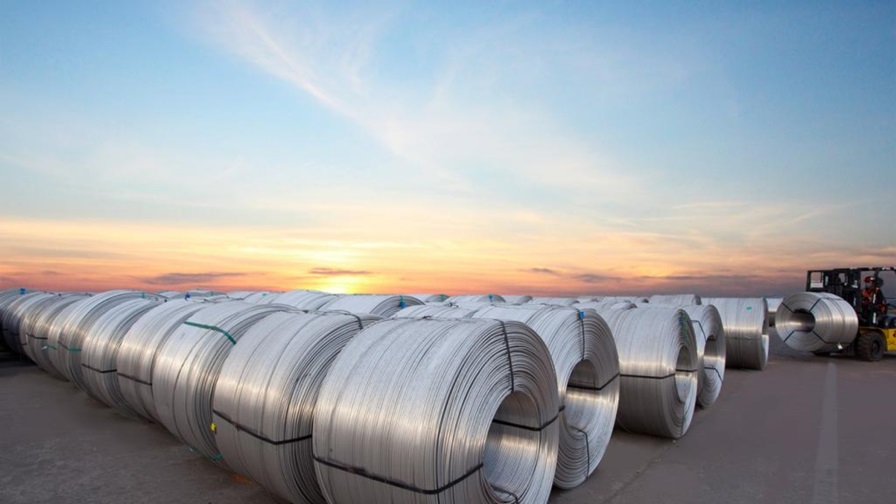 Affordable, reliable, and clean energy will be a key enabler in realization of India’s vision of a $5-trillion economy. According to the International Energy Agency, India is the world’s third-largest energy consuming country, due to rising population, rising incomes, and improving standards of living. From sustainably leveraging large-scale coal reserves for power generation, to ensuring energy access to all corners of the country, institutionalizing quality controls for energy efficient machines and consumer goods and investing in and harnessing substantial solar energy as well as other forms of renewable energy, India’s post-COVID recovery phase is going to be a very dynamic period in its energy development.
Affordable, reliable, and clean energy will be a key enabler in realization of India’s vision of a $5-trillion economy. According to the International Energy Agency, India is the world’s third-largest energy consuming country, due to rising population, rising incomes, and improving standards of living. From sustainably leveraging large-scale coal reserves for power generation, to ensuring energy access to all corners of the country, institutionalizing quality controls for energy efficient machines and consumer goods and investing in and harnessing substantial solar energy as well as other forms of renewable energy, India’s post-COVID recovery phase is going to be a very dynamic period in its energy development.
At Vedanta Aluminium, we are marrying sustainable and efficient manufacturing processes with our technology leadership, to produce top-quality value-added aluminium products. As India’s largest producer of aluminium, Vedanta has been catering to the raw material needs of the power sector with its superior quality wire rods, produced using global best technologies. In this regard, we are also a key enabler and advocate of indigenously developed products, domestic manufacturing, value-addition, and supply of quality products to the downstream industries.
Besides supplying electric grade wire rod to domestic players, we are working on development of customized variants for niche applications. Our aluminium smelter in Jharsuguda, Odisha, is fast emerging as the nerve centre of the domestic aluminium industry’s value-addition and technological prowess.
We are developing application-centric customizations of our wire rods portfolio for the power industry, like power transmission in coastal belts, which have specific requirements due to their climactic conditions. We are also adding some more special and premium grades of conductors for the power industry.


